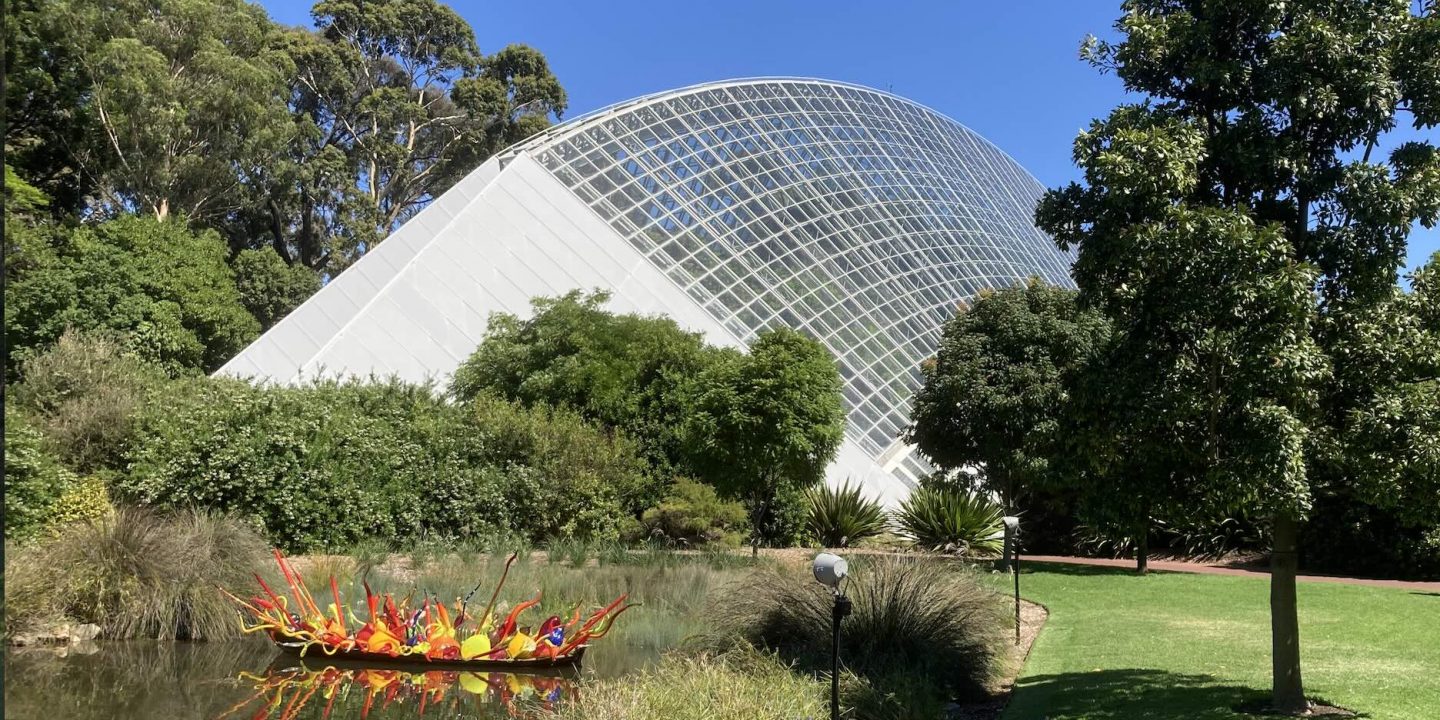A visit to the Adelaide Botanic Garden is certainly high up on the to-do list of a biologist visiting the capital of South Australia. In December 2024, a couple of days before the Australian midsummer, I had the pleasure to visit the Adelaide Botanic Garden and explored the plant diversity in the park. No doubt, the garden’s promotional slogan ‘In the heart of the city but another world away…’ makes a lot of sense. But it is not only the plants and the park architecture that attracts the visitor’s attention, among other fascinating buildings the Bicentennial Conservatory, the largest single span conservatory in the Southern Hemisphere designed by the South Australian architect Guy Maron and built in 1988, is an impressive eyecatcher. Once you enter the building a magnificent world of lowland rainforest plants from northern Australia, Papua New Guinea, Indonesia and the nearby Pacific Islands is waiting for you – among them tree ferns. Although not a botanist, the visit to the Bicentennial Conservatory within the Adelaide Botanic Garden made me interested in these impressive plants.
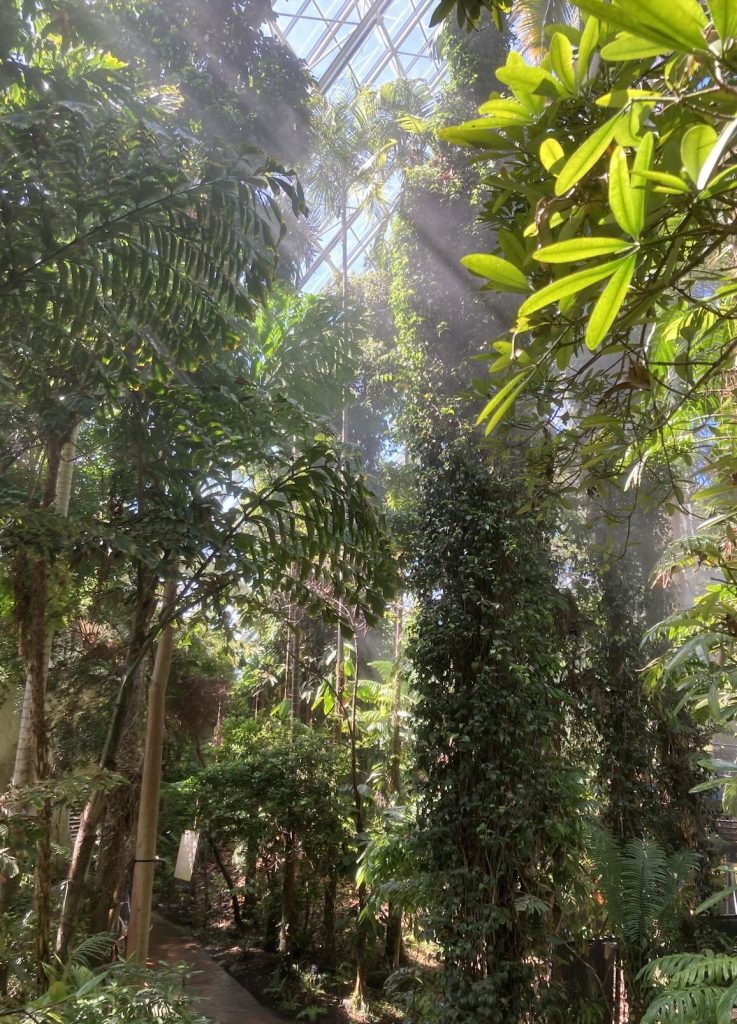
Tree ferns, or more precisely tree-like ferns, are distributed in tropical and subtropical as well as in south-temperate rain forests. However, some species also occur in southern Europe. The hallmark of tree-like ferns is that the ferns grow a trunk that elevates the fronds substantially above the ground. There are relatively small tree-like ferns with a trunk height of up to ca 1 meter and larger ones with trunk sizes exceeding 10 or even 20 meters. It is noteworthy that the trunk of tree-like ferns does not have a woody structure but essentially consists of roots that expand while the plant grows – botanists refer to such a structure as a vertical rhizome. In short, the term tree fern refers mostly to the overall appearance of these plants and not to a specific evolutionary lineage.
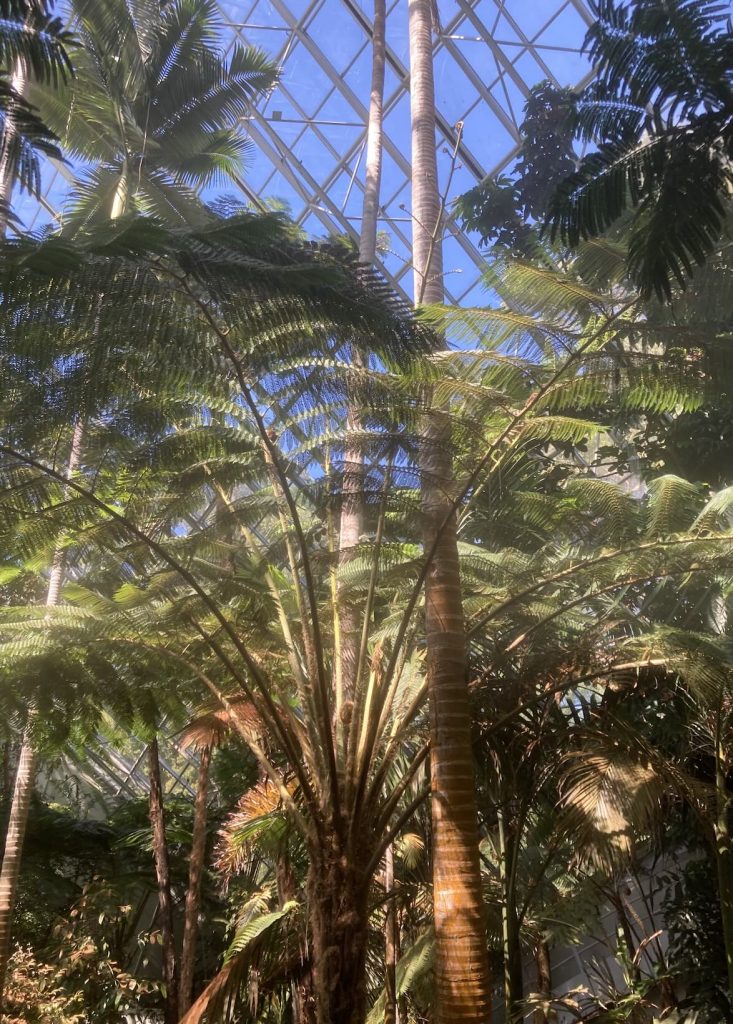
Today’s tree ferns, and it is assumed that there are more than a thousand species, belong mostly to the fern family Cyatheaceae (scaly tree ferns) within the order Cyatheales. Species of the order Cyatheales trace back to the Early Jurassic (some 201 – 174 million years ago). Even earlier tree fern lineages have significantly contributed to the coal forests of the late Carboniferous (Pennsylvanian) and Permian periods. The order Cyatheales is largely defined by nucleotide sequence (DNA) data rather than by shared morphological features. Based on fossil evidence, it is assumed that the family Cyatheaceae lineage originated in the Late Jurassic (some 161 – 145 million years ago). As mentioned above, the systematics and phylogeny of tree ferns is based on molecular data; however, for details it is most informative to have a look at the original scientific publications, e.g. Korall & Pryer 2014 (an open-access publication accessible for anybody). I may need to note here that there are different opinions on how to define the family Cyatheaceae. The broadest definition (Cyatheaceae sensu lato) considers the family Cyatheaceae the only one within the Cyatheales.
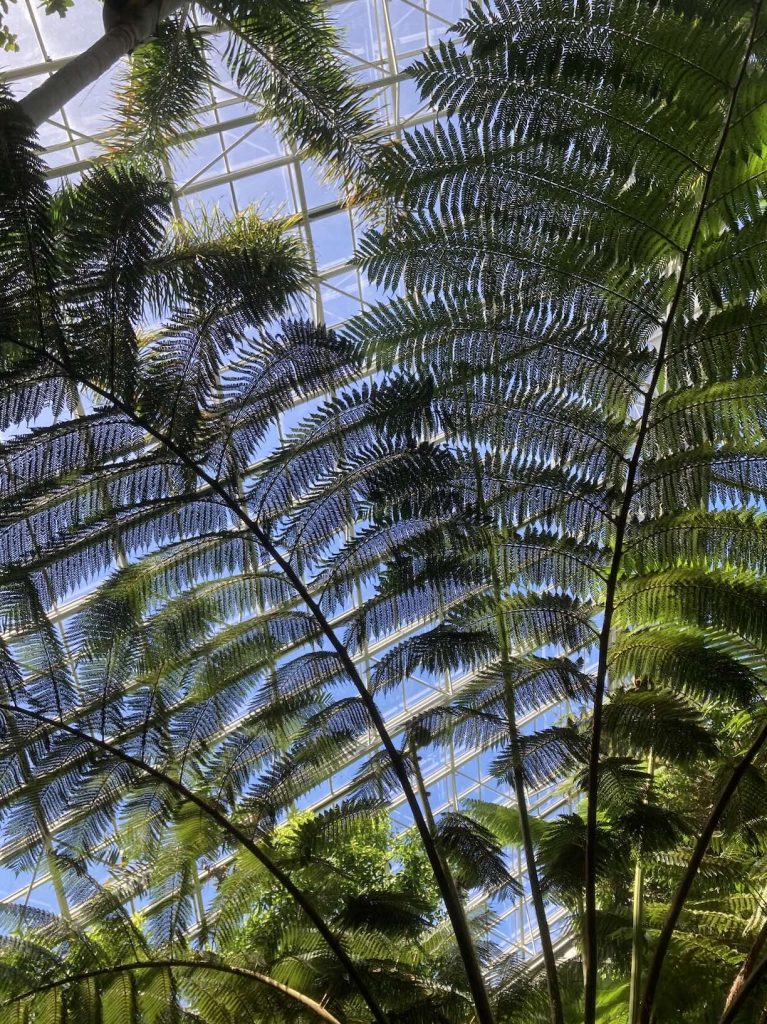
Many tree fern species can be found in Australia and the most common ones are Cyathea australis (rough tree fern), Cyathea cooperi (lacy tree fern), and Dicksonia antarctica (soft tree fern), which is the most abundant tree fern in South Eastern Australia. In south-temperate rainforests tree ferns can cover > 50% of the basal area and contribute a substantial part of the forest biomass. They provide suitable habitats for numerous epiphyte species. Surprisingly, there is rather limited information about the ecology of tree ferns and their roles in ecosystems.
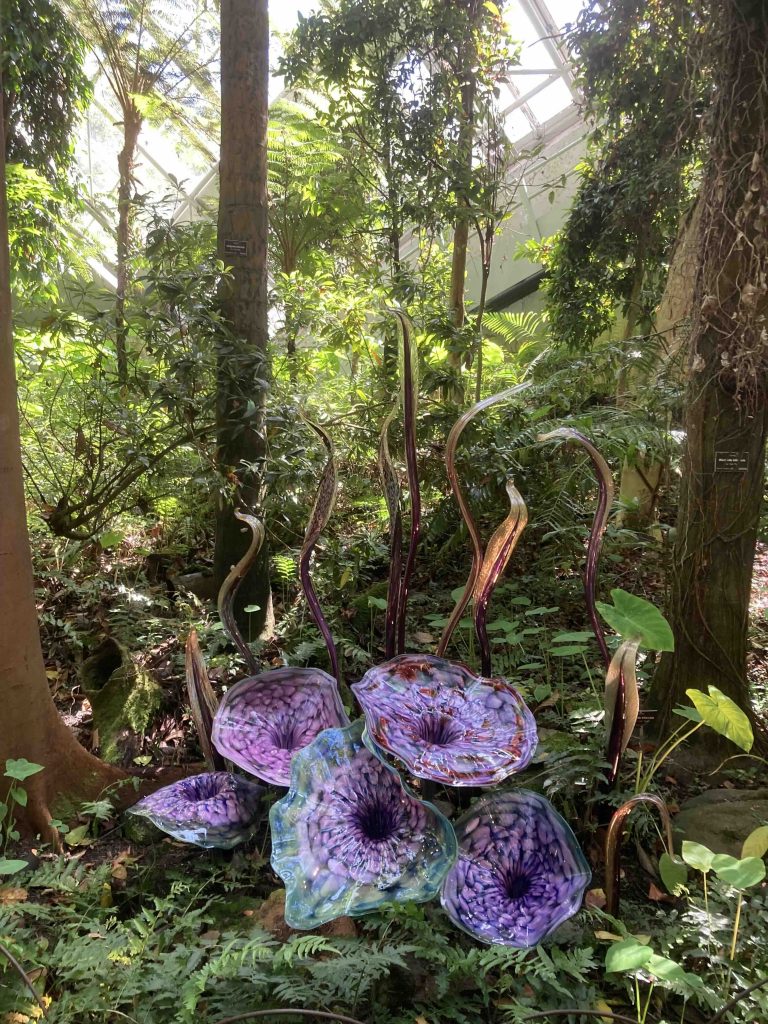
Once more aware of the fascinating tree ferns, it is very easy to find them in their natural habitats when traveling across and/or hiking in southeast Australian rainforest. Even when following for example the main roads from Adelaide southeast towards Geelong or Melbourne you will not only see the famous 12 apostles but also cross rainforests with impressive tree ferns. the It is certainly recommended to keep an open eye to them. In this respect, a highly recommended visit to the Bicentennial Conservatory within the Adelaide Botanic Garden provides a first experience to arouse interest.
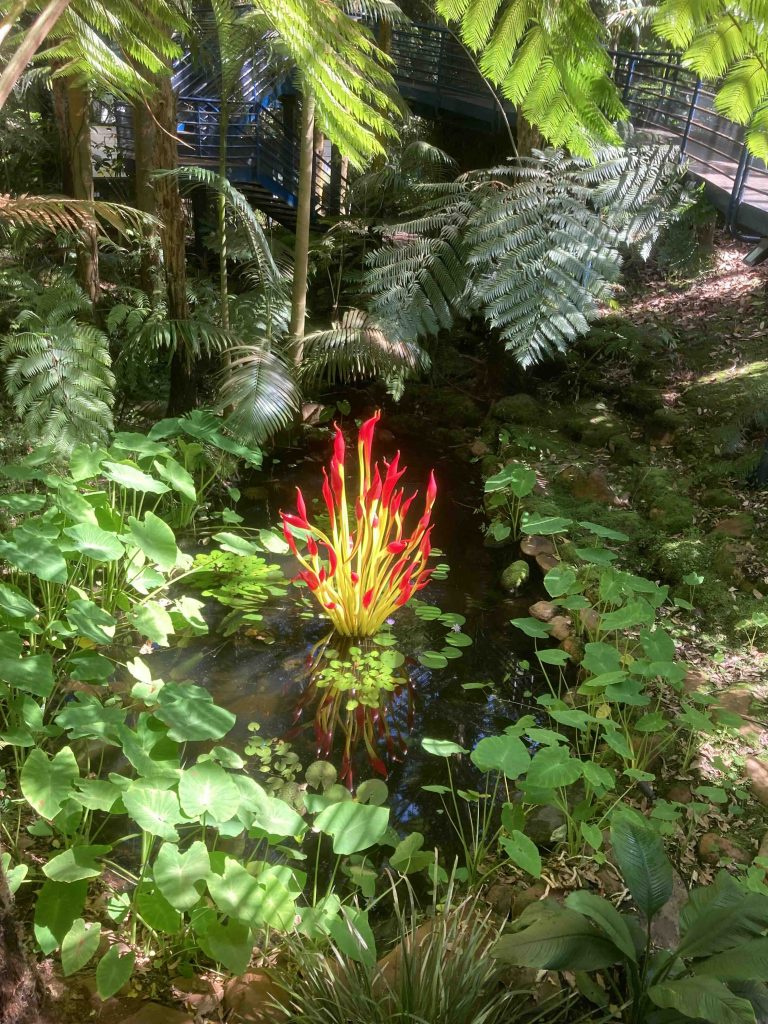
Finally, I wish to acknowledge the temporary ‘In Full Colour: Dale Chihuly’ exhibition showing glass colorful sculptures created by Dale Chihuly, a leading American glass artist, erupt from the rainforest. Combining glass art and temperate rain forest made the visit an even more special experience.
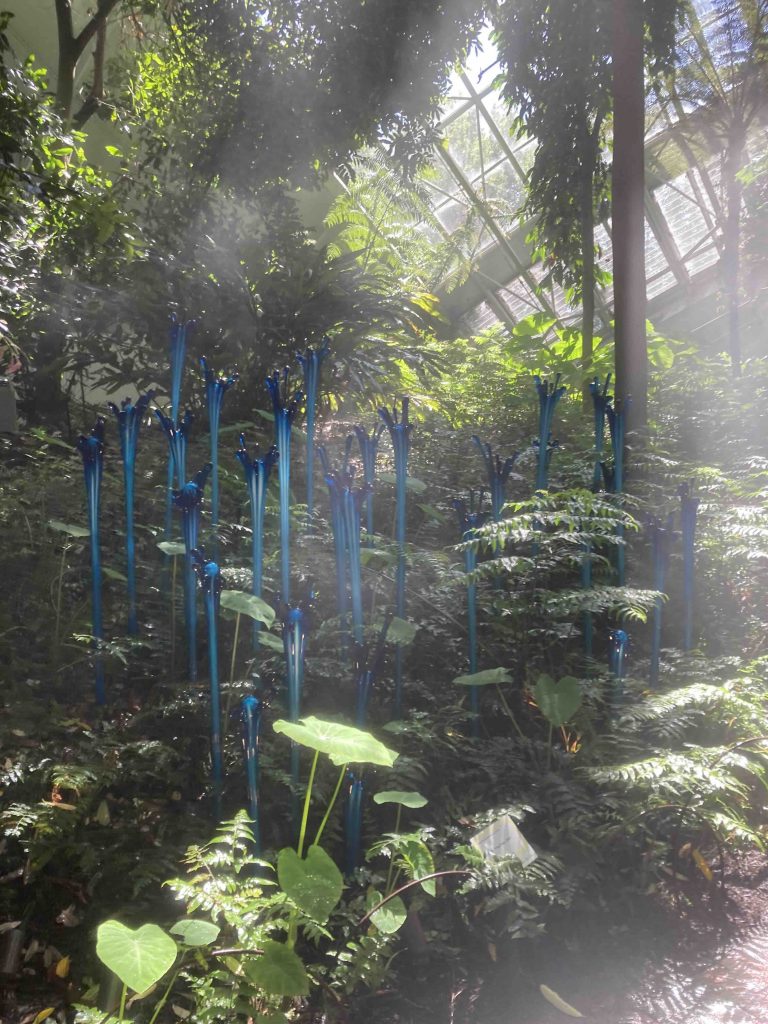
Further reading:
James M.R. Brock, George L.W. Perry, William G. Lee, Bruce R. Burns. 2016. Tree fern ecology in New Zealand: A model for southern temperate rainforests. Forest Ecology and Management 375: 112-126. https://doi.org/10.1016/j.foreco.2016.05.030
Petra Korall, Kathleen M. Pryer. 2014. Global biogeography of scaly tree ferns (Cyatheaceae): evidence for Gondwanan vicariance and limited transoceanic dispersal. Journal of Biogeography 41: 402–413. https://doi.org/10.1111/jbi.12222
Shavawn Donoghue, Perpetua A. M. Turner. 2022. A review of Australian tree fern ecology in forest communities. Austral Ecology 41: 145-165. https://doi.org/10.1111/aec.13103
![]()
